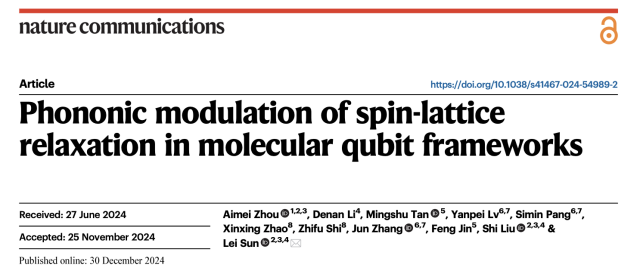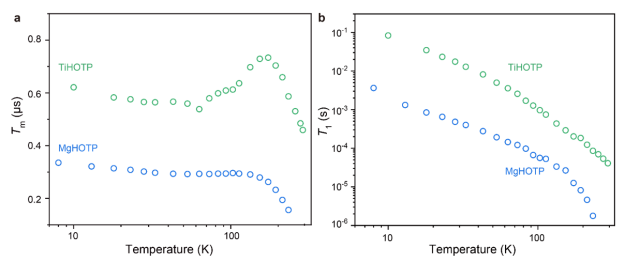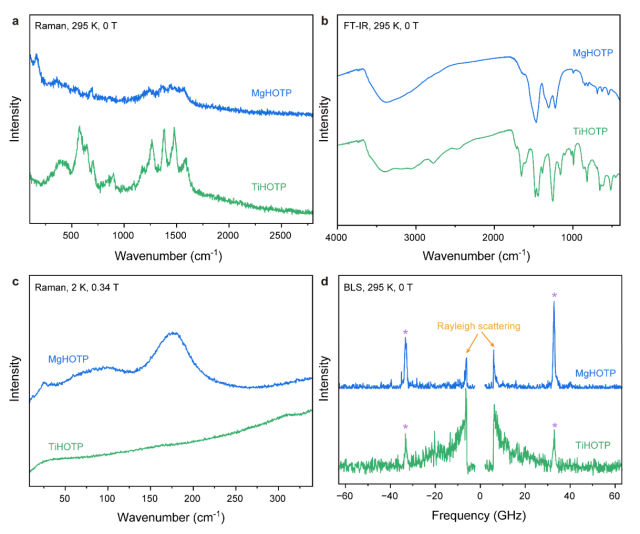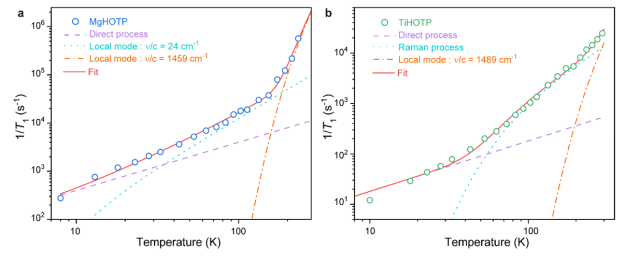Published in Nature! CIQTEK Pulse EPR Boosts The Discovers of New Method to Enhance Bit Performance
Recently, a research paper titled “Phononic modulation of spin-lattice relaxation in molecular qubit frameworks” by the research team led by Sun Lei from the School of Science at Westlake University was published in Nature Communications.


Figure 1: Hydrogen bonding network and phonon modulation of spin-lattice relaxation in MQFs
The team used CIQTEK pulsed Electron Paramagnetic Resonance (EPR) Spectroscopy X-band EPR100 and W-band EPR-W900 to characterize two molecular qubit framework materials containing semi-quinone radicals.

Figure 2: Spin dynamic properties of MgHOTP and TiHOTP
They discovered that hydrogen bonding networks in these materials led to decreased structural rigidity, resulting in sub-terahertz optical phonons, reduced Debye temperature, increased acoustic phonon density of states, and promoted spin-lattice relaxation. Deuterium substitution in the hydrogen bonding network further lowered the optical phonon frequencies and shortened the spin-lattice relaxation time.

Figure 3: Vibrational spectra of MgHOTP and TiHOTP
Based on these findings, the researchers proposed a molecular qubit framework design to control phonon dispersion precisely, suppress spin-lattice relaxation, and improve qubit performance. This achievement provides new insights and opportunities for solid-state integration and quantum information applications of molecular electron spin qubits.

Figure 4: Spin lattice relaxation mechanism of MgHOTP and TiHOTP

Figure 5: Influence of deuterium substitution in the hydrogen bonding network on low-frequency optical phonons and spin-lattice relaxation in MgOTP
In summary, this study revealed that the structural rigidity of molecular qubit framework materials can be used to control phonon dispersion, suppress spin-lattice relaxation, and improve quantum coherence and the applicable temperature range. The research findings can potentially advance the solid-state integration and molecular quantum information technology of molecular electron spin qubits.
